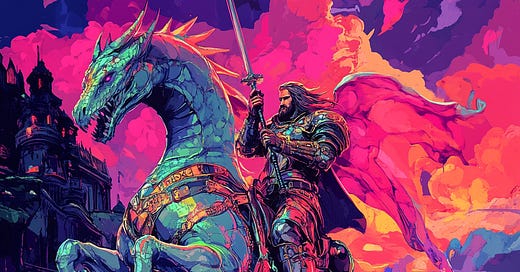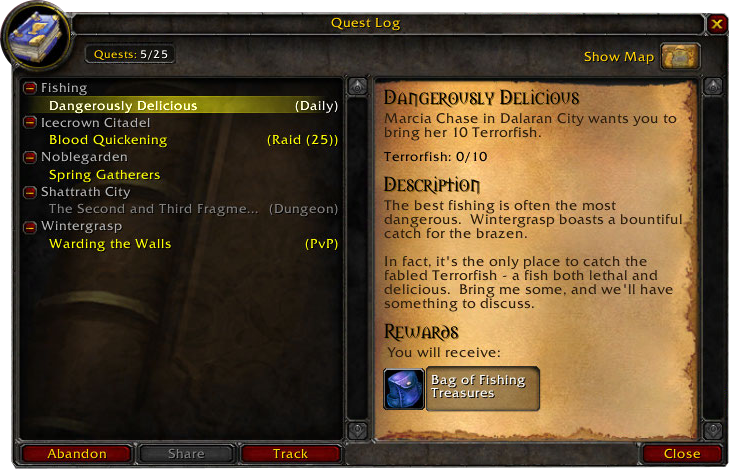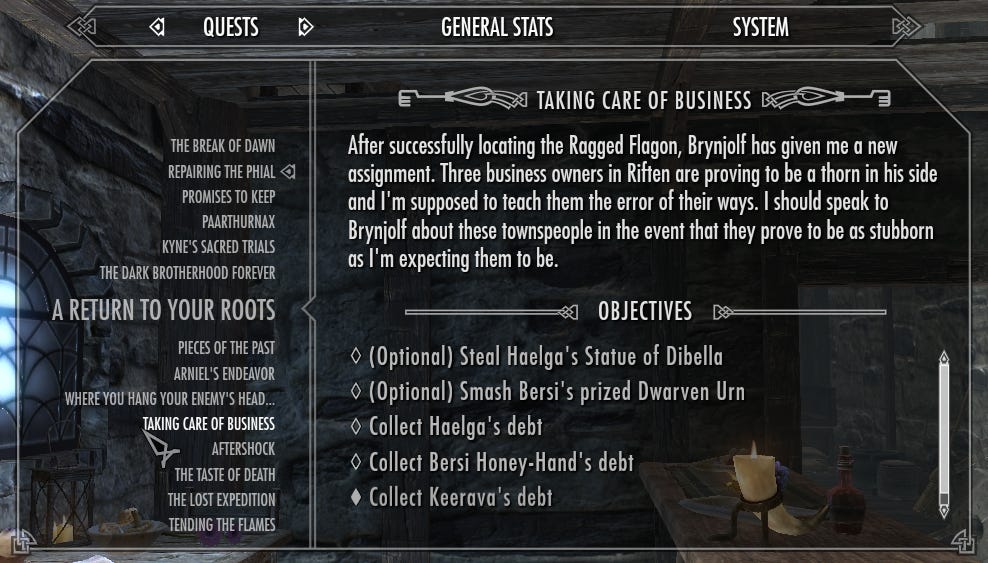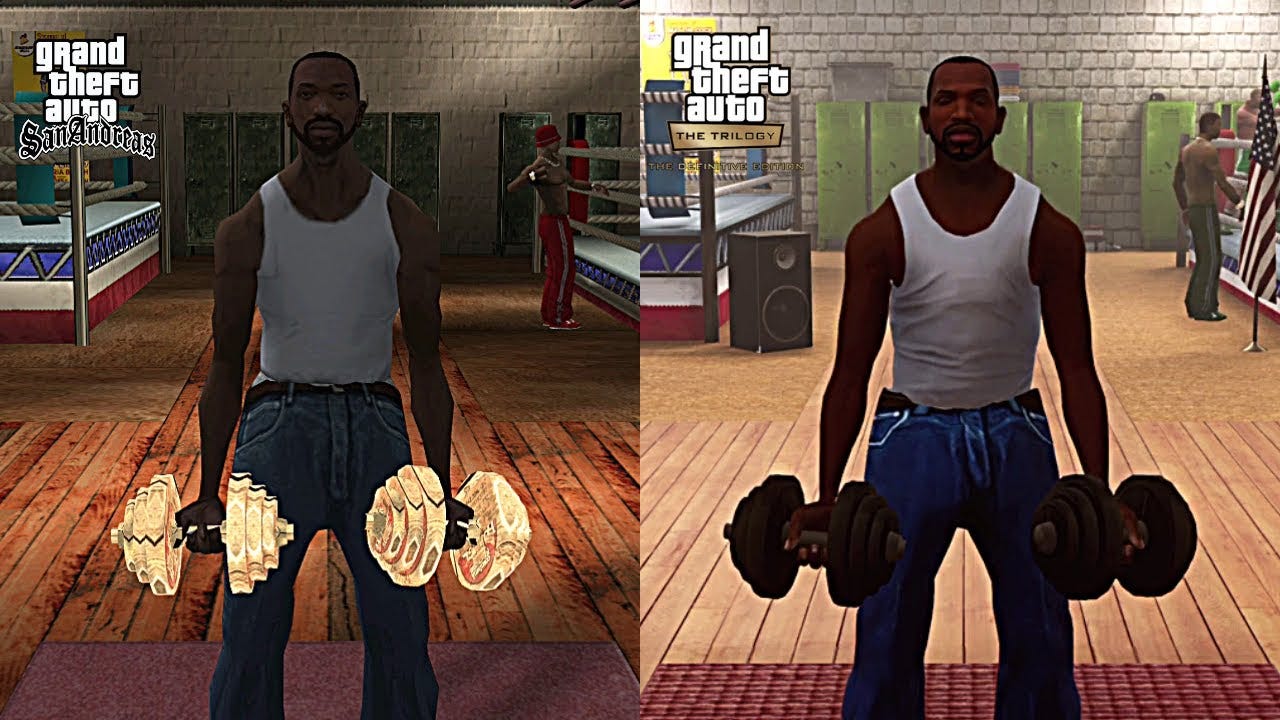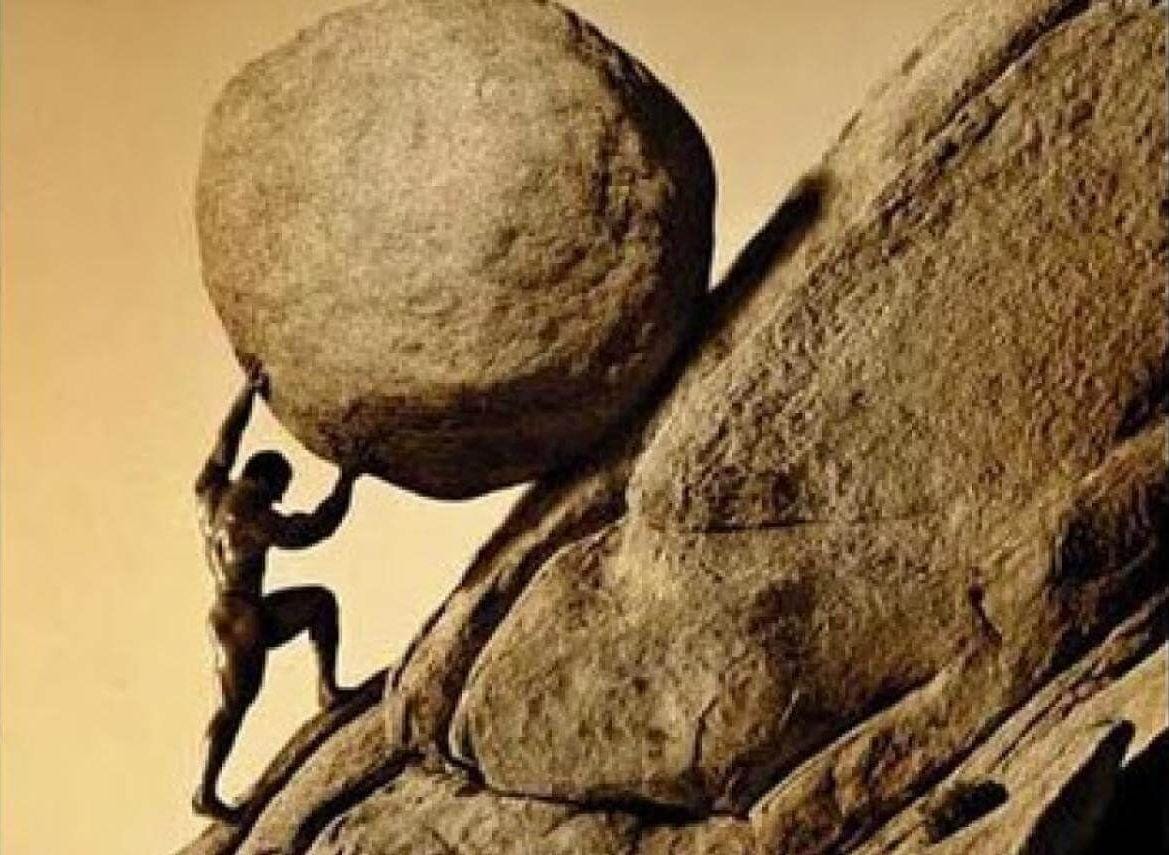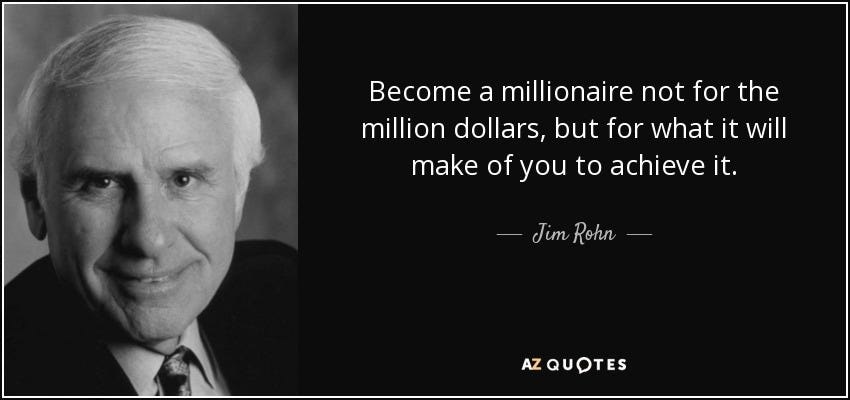Conquer ADHD- Regulating your Dopaminergic System For Maximizing Outcomes (Part 3)
Step 2: Build The Ultimate RPG Using Your Goals As Quests
Intro
Last week, we walked through the evolutionary logic for our dopaminergic feedback system and how modern companies can and do exploit that system for their own gain and your loss. From there, we presented a two part model to leverage this powerful neurochemical cocktail for the pursuit of your goals, starting first with simplifying your life - eliminating all extraneous sources of dopamine and leaving only behaviors that are going to move you toward your goals.
Today we’re going to move into gamifying the behaviors that remain, so that we can move from “these are the things I do because I’ve eliminated everything else” to “these are the things I do because I’ve trained myself to become obsessed with them”.
Build Your Quest Log: Clear Objectives (Done Right)
We will not beat a dead horse when it comes to the importance of goal setting. Instead, we will look at how role playing games (RPGs) serve as a great model for setting clear objectives, and look at how the considerations developers have when they design quest logs are applicable in your day to day reality.
When you embark upon a quest in a game, the following are immediately laid out:
What you stand to gain from embarking on the quest (rewards, experience etc.)
The context/back story on why the quest is important
What you have to do and where you have to go, broken down into linear steps
A location marker that positively reinforces you when you go in the right direction, and course corrects you when you go the wrong direction.
We know exactly what we need to do in a video game, and this clarity makes taking action straight forward and easy.
In contrast, most people start with huge, audacious and vague goals. Take some common ones: “Be a millionaire”, “get into shape”. These wishes fulfill the “what you stand to gain” component of a clear objective, but fall well short on all the other criteria. The resulting vaguery leaves most people confused on where to start, and even if they do get going it’s not long before they run into a roadblock and end up falling off because the next step is ambiguous.
A light bulb moment went off for us when we listened to video game developers talk about how to design a good quest log, and the ways in which poor design hampers users willingness to engage with the game - sounds awfully familiar, doesn’t it? Listen below to the devs for Obsidian:
Some key quotes -
“What if somebody is coming back to this game not having played for a couple of weeks? Are our quest logs and journals explicit enough to the player so that they can pick the game back up and try and figure out where they’re going? We had seen in other games the quest logs didn’t give enough context. The log would say ‘find and return the gadget’, what gadget? who wants it? who gave me this quest? And you would just have no idea….
…and that was even 20+ years ago when a lot of us had a lot of time to play these games. Even then, you’d come back to the game the next day and you’d be kind of confused.
Now you’re lucky if you get an hour or two to play a game and you haven’t played it in a week and you come back and you have no idea what you’re supposed to be doing. So we just really wanted the quest log to have as much information as possible so you could pick it up after you hadn’t played that quest or the game itself for however long you hadn’t played it for.”
“My brother was playing Fallout, 20 years ago, and he had newborns and he said ‘look, I only get 30 minutes, tops, a night, maybe two non-consecutive days a week’ and he just said ‘I can’t figure this out’ and he stopped playing Fallout because of it”
Take Actions
Build your own personal Quest Log - We use Obsidian (the note taking app) for this but the tool matters less than having something that’s easily referenceable.
Identify the reward you stand to gain for achieving your objective
Build a progressive road map by working backwards with the end in mind - i.e: If your goal is to be a millionaire, then the next step back from there is identifying a vehicle to make money with, then the next step back from there is the skills you need to develop and to what point to be able to make that kind of money etc.
Here’s an example quest log we built for reference:
Objective: Develop 1st stripe white-belt proficiency in cold calling for (INDUSTRY VERTICAL) by having 100 completed conversations
Progress:
Build a list of 1000 prospects (20% phone picker uppers)
Get scored by TitanX (200 phone picker uppers)
Complete 20 call blocks of 5 completed conversations - 0/20
Rewards:
Created certification of first stripe while-belt
Music book of choice
Status: Active
Chunking - reduce difficulty (set smaller goals to accomplish the big goals)
Even the most difficult video game objectives are significantly easier to achieve than real-life goals. Why is that?
The skills you have to level up in real life are much wider ranging and take longer to master (at the end of the day a game is some combination of button clicking)
Video games are MUCH more linear, which means you may be able to reach your “ultimate objective” in minutes vs. real life where you may be embarking on a multiple year journey requiring significant skill progression.
Those of us who played Grand Theft Auto remembered well making our character as buff as possible - sure, we had to '“lift” in the game, but it probably took an hour of simple button tapping to take your character from pipsqueak to mass monster. Contrast this with real life, where building serious mass could take a decade of strict and unceasing adherence to diet, rest and progressive training, and it’s obvious why there are so many more jacked GTA characters than there are people wandering around in the real world.
Thankfully, all is not lost, and by describing the problem thoroughly we equip ourselves with the tools to intervene: Real life has a MUCH longer feedback loop with more dynamic responses across exponentially more iterations.
Take Actions
Break down these quests into the SMALLEST POSSIBLE DAILY ACTION
Note: The smallest possible daily habit is likely to seem trivial in the context of your overall goal, but enables you to build momentum toward taking larger actions.
Ex: If your goal is to write a book, “write 100 words a day” may seem like an insultingly low number, but will definitely get you closer toward a published book than writing zero words a day. If your goal is to get good at the guitar, “practice guitar 15 minutes a day” may be laughable compared to what a master musician does, but you have to be a musician AT ALL before you stand any chance of being a master musician.
Now that you have your smallest possible daily actions, schedule them and execute when that time of your day comes up. If it’s difficult to execute your chosen actions, you’ve probably bitten off more than you can chew, and should revisit your definition of what the “smallest possible daily action” is - if this happens to you, fear not, as most people overestimate what they can do to start. The most important thing is that you’re moving forward - pace can always be negotiated later.
Revisiting our cold calling example from earlier, this may be “make 50 dials a day”. We’re not huge fans of using dial counts to quantify efficiency, but if you’re reticent to pick up the phone at all it’s as good a starting place as any.
Gamify resistance/discomfort
For reasons we’ve explicated earlier in this series, our brain wants an easy path to dopamine. Thus, when we run into resistance and discomfort, our first instinct will always be to turn our attention elsewhere.
It is absolutely critical to overcome these roadblocks, and once again video games can show us why: When you’re on an RPG quest, the developers put obstacles in your way - whether it be in the form of enemies to defeat or puzzles to solve. This resistance is, definitionally, a frustrating stimuli - it stands in between you and what you want to get - and in all cases, when you’re able to overcome the resistance, you get what you want.
Thus, it’s critical to reframe discomfort not as negatives, but rather as "signs that we’re headed toward our goals.
This is not simply a mindset shift, but rather information that enables us with the tools to hack our own psychology: If we have clear objectives, have broken down the accomplishment of those objectives into smaller steps, then every time we complete a small step, we reward ourselves and teach our brains “why” it’s worth breaking through resistance.
By tying reward to overcoming resistance, we build up our self belief and make it easier to persist through challenges in the future- which is exactly what video games do.
The logical progression of this is not dissimilar from progressive overload in the gym: Overcoming small challenges gets you small reward, but more importantly builds the mental muscle necessary for you to overcome bigger challenges and subsequently earn bigger rewards. Rinse and repeat.
Take Actions
Now for the fun part - take the small steps you laid out in your roadmap above and give yourself rewards in accordance with the accomplishment of those steps
Ex: If my smallest daily action is making 50 dials a day, I may decide once I wrap up those dials to treat myself with a walk to Dunkin Donuts and a cold brew.
Critical Considerations:
You want your reward to follow as closely to the completion of your sub-step as possible. The closer we reward behavior to its occurrence, the faster “learning” occurs and the easier it is to repeat those behaviors in the future
Actively seek rewards that are high dopamine in nature - for example, earlier I gave the example of making a goal of completing 100 conversations with my target market. As soon as this happens, I’ll want to get on Amazon and buy the sheet music I want (online retailers do a phenomenal job of tapping into dopamine-seeking behavior)
Other rewards you can give yourself:
Caffeinated beverages
Exercise
Food
Reflect on the unique privilege of human existence
When you’re deep in the day to day of getting through your quest log, it’s easy to lose sight of the bigger picture. After all, why go through this elaborate exercise of breaking down audacious goals into sub-steps, struggling with resistance and delaying our rewards when we can choose instant gratification at any moment?
Jim Rohn gives us some clues here: The real reward is not the material outcomes of completing our quests, but rather the mental muscle we build in the process that enables us to set and pursue even bigger goals. Embrace Nietzsche’s Ubermensch and grow broader shoulders to hoist heavier burdens - elevating yourself into an increasingly rare breed of humans who have resisted the siren song of an easy life in pursuit of a meaningful one.
Chasing cheap dopamine, on the other hand, catabolizes our future self. By avoiding challenge, we neglect the mental machinery that can handle difficulty, denying ourselves not only the immediate spoils of war but worse who we could have become in the process.
Taken a step further, our finite existence combined with the time and effort it takes to level up means that each passing day of inaction lowers the ceiling on our future potential and closes the door on who we could have become. Do you want to look up in 10 years and realize that you traded your best self for Netflix and TikToks? We don’t mean to sound depressing, but re-contextualizing the importance of taking massive action daily involves not only rewards (like we’ve discussed today) but reframing the very real pain of inaction.
Take Actions
Take time in your day to actively practice gratitude - it’s easy to fall into the perspective that we “have” to do things rather than that we “get” to - it’s for this reason that so many successful people pray, meditate, journal etc. - the pursuit of your goals is a privilege, and being in a position where we can place primary importance on their attainment is a reality denied for the overwhelming majority of the world that is focused on survival.
Write your “Carlton Letter” (H/T Christian Retek) - get yourself on the life-line you wish to occupy by writing a letter AS future you addressed to present day you. Walk through your daily life in sensory rich detail, taking ownership NOW of all that you desire.
Conclusion
By gamifying the behaviors that you KNOW will lead toward your desired outcomes, you tap into a powerful feedback loop that makes taking action in service of your goals progressively more enjoyable, eventually reaching a tipping point where it becomes more difficult NOT to engage in those activities than it is to execute.
If you can combine gamification with a long-term orientation grounded in gratitude and assumptive ownership over the outcomes you desire, you become The Terminator. An unstoppable, inevitable force moving single mindedly toward fusing your desired timeline and your present one.
“That Terminator is out there. It can’t be bargained with, it can’t be reasoned with. It doesn’t feel pity, or remorse, or fear, and it absolutely will NOT STOP. EVER.”
Rooting for you,
Charles
References:

